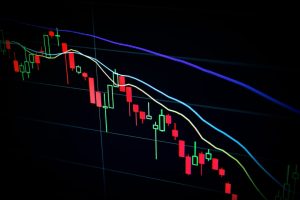Forex trading requires a stable and reliable internet connection to execute trades in real-time. However, it can be challenging to maintain a consistent connection, especially if your trading platform is located in a different country or region. This is where a virtual private server (VPS) comes in. A VPS is a remote server that can be accessed from anywhere in the world, providing a stable and reliable connection for Forex trading. In this article, we will explore how to use a VPS for Forex trading.
What is a VPS?
A VPS is a virtual machine that runs on a physical server, providing dedicated resources such as CPU, RAM, and storage. It allows users to access a remote server, which can be used for various purposes such as hosting websites, running applications, and more. VPS is also used for Forex trading to provide a stable and reliable connection.
How to use a VPS for Forex trading?
Using a VPS for Forex trading is easy and straightforward. Here are the steps to follow:
Step 1: Choose a VPS provider
There are many VPS providers available in the market, but not all are suitable for Forex trading. You need to choose a provider that offers high-speed internet, low latency, and reliable uptime. Some of the popular VPS providers for Forex trading are Amazon Web Services (AWS), Microsoft Azure, and Google Cloud.
Step 2: Choose a Forex trading platform
Once you have chosen a VPS provider, you need to choose a Forex trading platform. There are many platforms available in the market, but some of the popular ones are MetaTrader 4 (MT4) and MetaTrader 5 (MT5). These platforms are widely used by Forex traders and offer a range of features such as advanced charting, automated trading, and more.
Step 3: Install the trading platform on the VPS
After choosing a trading platform, you need to install it on the VPS. Most VPS providers offer a pre-installed trading platform, but if not, you can install it manually. You can do this by connecting to the VPS using remote desktop connection (RDC) or any other remote access tool.
Step 4: Connect to the VPS
Once the trading platform is installed on the VPS, you need to connect to the VPS using RDC or any other remote access tool. You will need to enter the IP address, username, and password provided by the VPS provider to connect to the VPS. Once connected, you can access the trading platform and execute trades in real-time.
Benefits of using a VPS for Forex trading
Using a VPS for Forex trading has many benefits, such as:
1. Stability and reliability
A VPS provides a stable and reliable internet connection, ensuring that trades are executed in real-time without any interruptions.
2. Low latency
A VPS offers low latency, which is essential for Forex trading. Low latency ensures that trades are executed quickly and accurately, reducing the risk of slippage.
3. Security
A VPS is more secure than a regular internet connection, as it is protected by firewalls and other security measures.
4. Scalability
A VPS is scalable, which means that you can increase or decrease the resources as per your requirements.
Conclusion
Using a VPS for Forex trading is a great way to ensure a stable and reliable internet connection. It offers low latency, high-speed internet, and security, making it an ideal choice for Forex traders. By following the steps mentioned above, you can easily set up a VPS for Forex trading and enjoy the benefits it provides.





